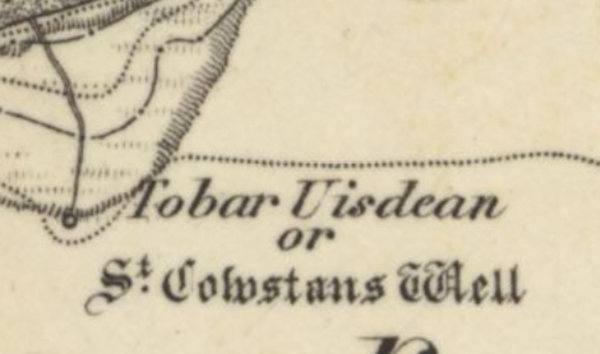 |
Dedication: Saint Cowstan Location: Garrabost Coordinates: 58.221657N, -6.2359247W Grid reference: NB513337 Heritage designation: none |
HOME - SCOTLAND - WESTERN ISLES, ORKNEY AND SHETLAND
 |
Dedication: Saint Cowstan Location: Garrabost Coordinates: 58.221657N, -6.2359247W Grid reference: NB513337 Heritage designation: none |
The exact identity of "St Cowstan", who has also been called Couslan, is rather mysterious. Both James Rankin (in A Handbook for the Church of Scotland) and James Murray Mackinlay (in Folklore of Scottish Lochs and Springs) identified Cowstan with a Scottish St Constantine - not Constantine the Great. A saint named Constantine was recorded in 558 in the Annals of Ulster; he is said to have been a follower of St Mungo, and he was martyred in 576 in Kintyre. As he was a missionary, it is quite possible that he may have visited the area around Garrabost, although it is, of course, plausible that St Cowstan was simply a local saint whose identity has become confused with Constantine's.
The earliest known reference to St Cowstan's Well, or, as it was also known, "Tobar Uisdean" or "Huisdean", was made in 1695 by Martin Martin, in his Deſcription of the Weſtern Iſlands of Scotland:
|
The Well at St. Cowſten's Church never boils any kind of Meat, tho it be kept on fire a whole day. |
The well was certainly believed to have had healing powers, and, according to the Canmore database, it still is believed to possess them today. The sick or injured would be brought to the foot of the cliffs, to the point at which the stream from St Cowstan's Well forms a small waterfall; they would then be placed beneath this waterfall, in the hope that they would be healed. In 2015, when Scotland's Coastal Heritage at Risk visited the site, they were told by a local man that his uncle would "only drink water from the well", and that his sister, when younger, was in the habit of taking their younger brother to the well to cure his warts.
Tobar Uisdean was certainly associated with St Cowstan's Chapel, a medieval chapel that, unfortunately, has now been destroyed. The well is located only a hundred yards or so away from the site of the chapel. Thomas Scott Muir described both the chapel and the well in 1885 in Ecclesiological Notes on Some of the Islands of Scotland:
|
At Garrabost, north-east of St. Columba's, is St. Cowstan's Well, in a steep declivity on the shore, and near to it the site of St. Cowstan's Chapel, now under crop. |
Today, the spring is evidently still producing a large quantity of water (the stream that runs from it can be viewed from Google Maps).
|
Access: The spring itself appears to be located on private land. |
Images:
Old OS maps are reproduced with the permission of the National Library of Scotland
Copyright 2025 britishholywells.co.uk